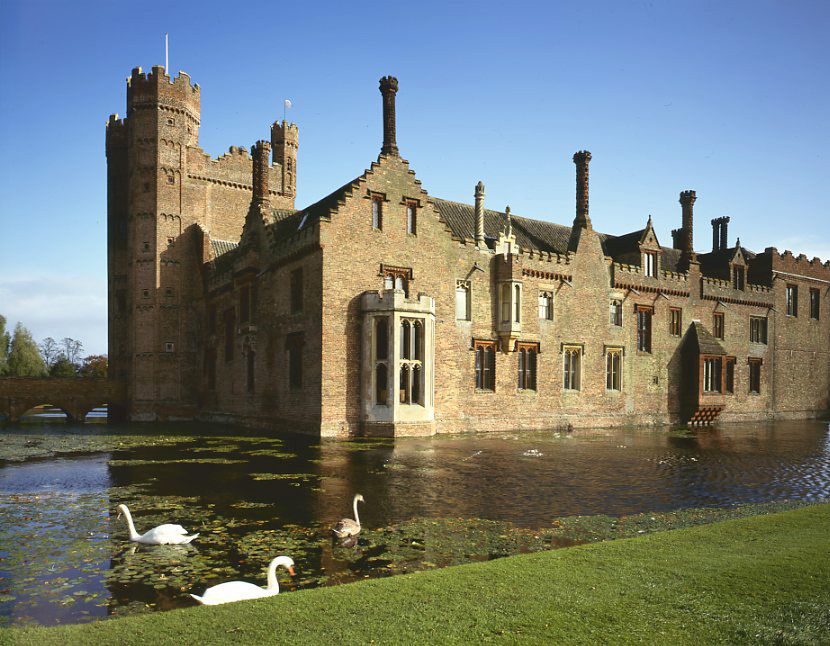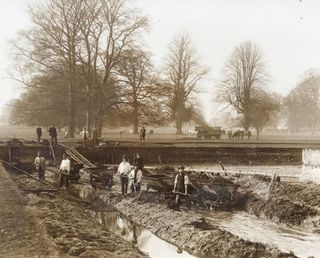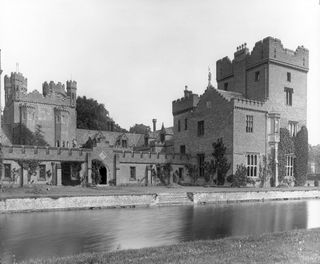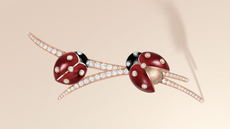Oxburgh Hall's 125 acres of parkland being returned to its former glory
Oxburgh Hall in Norfolk is being restored to its former glory thanks to pictured taken by the RAF after the Second World War. Annunciata Elwes explains more.


An exciting project to restore the parkland surrounding Oxburgh Hall in Norfolk to its 19th-century glory is now under way, with the help of a Victorian map and photographs taken by the Royal Air Force after the Second World War for reference.
The National Trust rescued Oxburgh Hall from demolition in 1951 and, in 2017, acquired an additional 125 arable acres (now left fallow), bringing the estate closer to its original footprint. The £190,000 project, in partnership with Historic England and Natural England, is expected to take 10 years and numbers among the Trust’s largest wood-pasture creations at some 100 acres.
Navigating around 10 surviving ancient trees, 227 further specimens will be planted — in some cases, using satellite positioning to match the historic design — including rare black poplars, white willows and oaks.
‘Fortunately, we have the sales details for the trees sold at auction (to be cut for timber) and we’re using this to identify the individual locations and species of trees for replanting after making some adjustments for the effects of… climate change and ash dieback,’ explains SR Historic Environment conservationist and historian Dr Sarah Rutherford.

Ponds and scrubland will also be reinstated and grass and wildflower seeds scattered, all of which will benefit wildlife, such as the rare hornet moth (which loves deadwood) and the lesser spotted woodpecker. In time, the charity hopes to see brown long-eared and barbastelle bats roosting and bird’s foot trefoil and knapweed blooming, as butterflies flit about over the heads of grazing native cattle — perhaps East Anglian red poll, suggests area ranger Tom Day, who also hopes to see ‘Norfolk Hawker dragon-fly, common frogs, smooth newts, snipe and stone curlew within a few years’.
‘Wood pasture is the closest habitat type to the original landscape that is thought to have covered most of Britain in the post Ice Age–Neolithic period,’ he adds, ‘and as such makes a perfect home for several butterfly species, from brimstones to common blues, plus many native and migratory birds, including meadow pipit, spotted flycatcher and garden warbler.’

Sign up for the Country Life Newsletter
Exquisite houses, the beauty of Nature, and how to get the most from your life, straight to your inbox.
Annunciata grew up in the wilds of Lancashire and now lives in Hampshire with a husband, two daughters and an awful pug called Parsley. She’s been floating round the Country Life office for more than a decade, her work winning the Property Magazine of the Year Award in 2022 (Property Press Awards). Before that, she had a two-year stint writing ‘all kinds of fiction’ for The Sunday Times Travel Magazine, worked in internal comms for Country Life’s publisher (which has had many names in recent years but was then called IPC Media), and spent another year researching for a historical biographer, whose then primary focus was Graham Greene and John Henry Newman and whose filing system was a collection of wardrobes and chests of drawers filled with torn scraps of paper. During this time, she regularly gave tours of 17th-century Milton Manor, Oxfordshire, which may or may not have been designed by Inigo Jones, and co-founded a literary, art and music festival, at which Johnny Flynn headlined. When not writing and editing for Country Life, Annunciata is also a director of TIN MAN ART, a contemporary art gallery founded in 2021 by her husband, James Elwes.
-
 The century-old enamelling technique used to create Van Cleef's lucky ladybird brooch — which has something in common with Country Life
The century-old enamelling technique used to create Van Cleef's lucky ladybird brooch — which has something in common with Country LifeThe technique used in the jeweller's Geneva workshop has been put to good use in its latest creation.
By Hetty Lintell Published
-
 ‘The best sleep in the sky’: What it’s like to fly in United’s Polaris cabin, approved by American icon Martha Stewart
‘The best sleep in the sky’: What it’s like to fly in United’s Polaris cabin, approved by American icon Martha StewartUnited’s Business Class cabin goes by the name Polaris and Martha Stewart is a fan. So, how does it fare?
By Rosie Paterson Published
